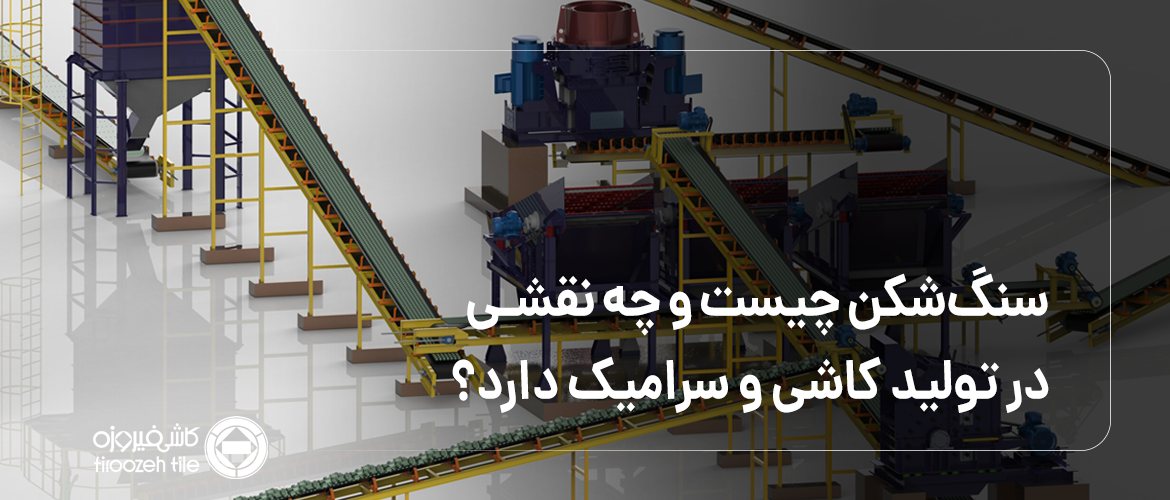
What is a stone crusher and what role does it play in the production of tiles and ceramics?
The preparation of raw materials is a crucial stage in tile and ceramic manufacturing, directly impacting the final product's quality. Stones extracted from quarries come in various sizes and hardness levels, requiring proper crushing before they can be used in production. The crushing unit performs this task, using specialized machines to process raw materials into the required standard sizes. This article explores different types of crushers, their working mechanisms, and their significance in the tile and ceramic industry.
Material Hardness and the Necessity of Crushing
Various raw materials are used in this industry, each with unique characteristics. For instance, feldspar and kaolin are among the harder materials compared to other components. Their hardness ranges from 5 to 6.5 on the Mohs scale, which measures material hardness from 0 (graphite – the softest) to 10 (diamond – the hardest). Materials with a hardness above 5 Mohs must undergo crushing before being used in production. Some factories have in-house crushing units, while others receive pre-crushed materials (sized between 1 and 2 cm) directly from quarries.
Crushing Process and Milling Cycle
Once raw materials are extracted, they are transported to annual storage units. These materials can reach sizes of 40 to 50 cm, making it necessary to break them down into smaller pieces for processing.
The daily production plan is set by the industrial planning unit and communicated to the crushing unit supervisor. The selected raw materials are then transported to the crushing unit and unloaded into the hopper. Materials smaller than 5 cm pass through a sieve, while larger pieces are directed to the jaw crusher for primary crushing. Afterward, they move to the hammer crusher and finally through a dual-layer sieve, ensuring proper sizing before being stored in daily silos.
If the output materials are still oversized, they re-enter the crushing cycle until they reach the required dimensions.
Types of Crushers in the Tile and Ceramic Industry
- Jaw Crusher – Uses fixed and moving jaws to apply pressure and break down hard materials, ideal for primary crushing.
- Hammer Crusher – Features an anvil and a rotating rotor made of silicon carbide, breaking materials through repeated impacts.
- Barmac Crusher (Vertical Impact Crusher) – Operates via centrifugal force and is efficient for soft rock crushing with low maintenance costs.
Challenges in the Crushing Unit
- High moisture content in raw materials can cause jaw crusher failure, motor burnout, or fuse damage.
- Blockages in the hammer crusher require manual clearing, slowing operations.
- Excessive belt pressure due to delayed discharge can lead to belt breakage or motor fuse failure.
Importance of the Crushing Unit in Ceramic Production
Necessary Material Size Reduction
- Coarse materials extend milling time significantly, sometimes doubling or tripling it.
- Excessive grinding of some materials leads to poor particle distribution and lower ceramic quality.
- Proper crushing enhances milling efficiency and final product consistency.
Crusher Material Composition and its Impact
- Steel crushers wear over time, contaminating raw materials with metal particles.
- Magnetic separators help remove unwanted iron.
- Silicon carbide crushers are preferred for their wear resistance and minimal contamination.
Conclusion
The crushing unit is vital for preparing raw materials in ceramic production. Proper equipment selection, operational management, and quality control significantly enhance factory efficiency and product quality.
